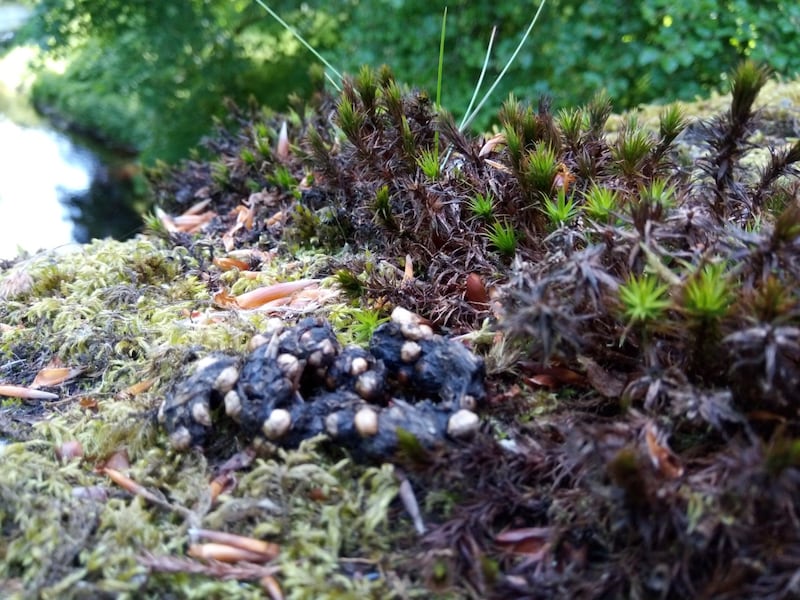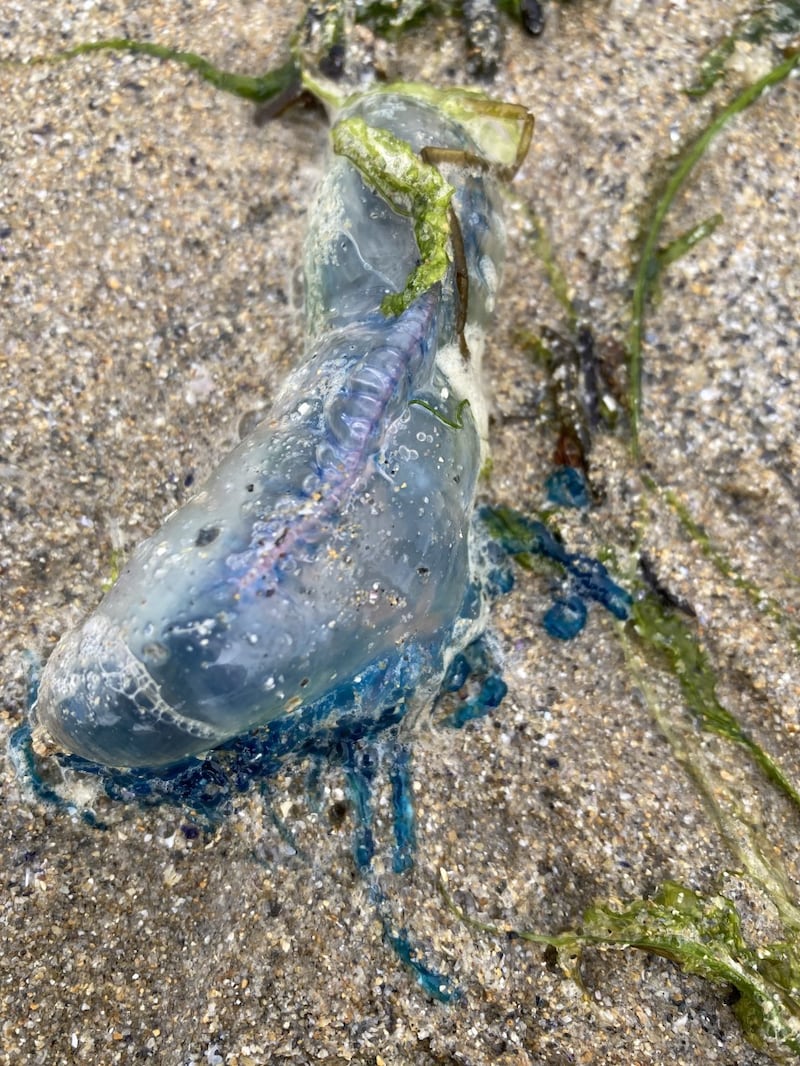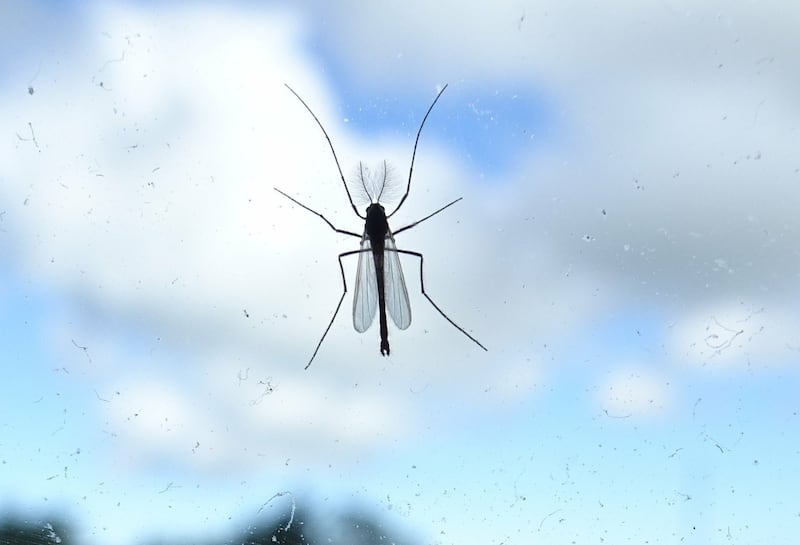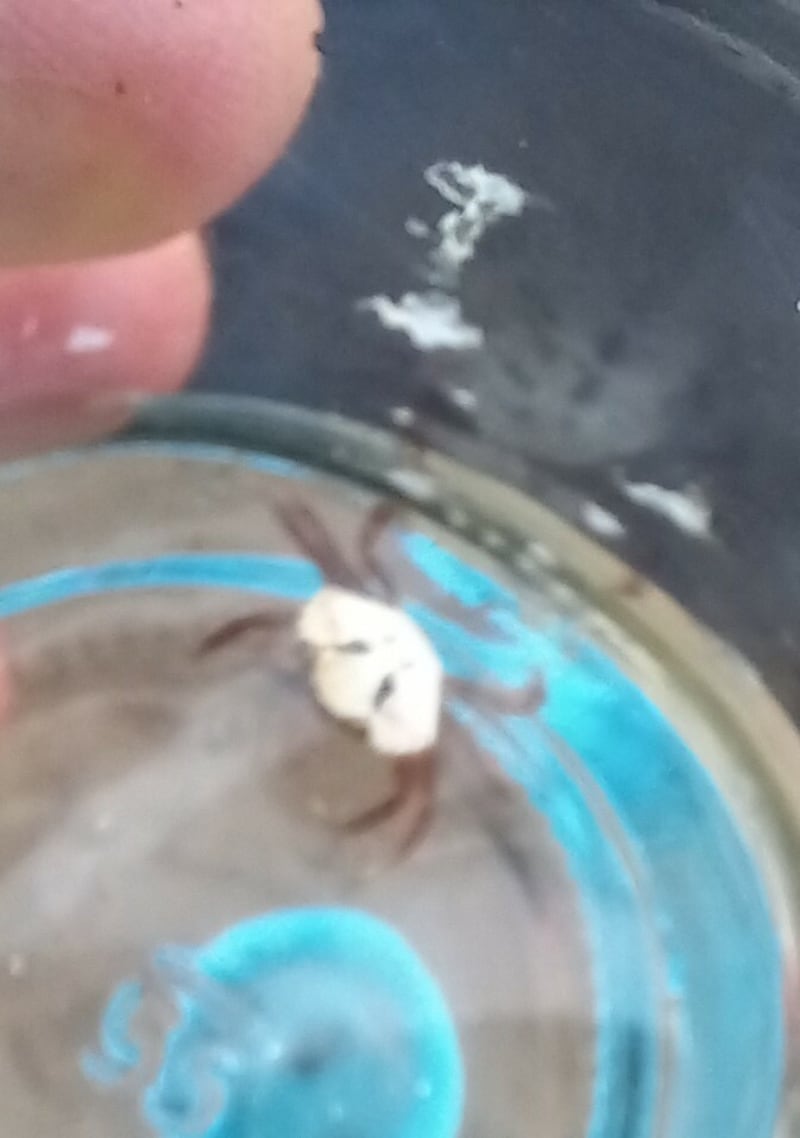I spotted this colourful caterpillar but am unable to identify; can you help? Ben Grant, Wexford
It is the caterpillar of the Lackey moth, which feeds on bramble and dog rose leaves.

On a recent visit to the Fermanagh countryside we spotted this spraint on a bridge over the river Colebrooke. There were both old and fresh deposits. What animal is leaving this to mark its territory? Judith Fleming
The pine marten marks its territory with regularly used latrines such as this. Wild cherries are part of their diet at this time of year and the droppings have a very musky, sweet and fruity smell, often compared to parma violet sweets – although you don’t report having smelled it.
RM Block

I found what I think is a tiny Portuguese man o’ war on a Donegal beach at the end of May. I didn’t expect to find it so far north. Grainne O’Neill, Donegal
It is a by-the-wind-sailor – a jellyfish type of sea animal that also has a sail on top and is carried by the wind and ocean currents. Both creatures can be washed up anywhere on our Atlantic coasts.

A snap I took of a fly on a window pane in Belmullet, Co Mayo, only revealed on closer inspection that it has “whiskers” on its front antennae. You might identify and elaborate on this fascinating creature. Bobby Carty, Mayo
Very close inspection obviously, as this is a 12mm-long male non-biting midge. Males swarm at this time of year, mate and then die. They do not bite but females feed on our sweat, which can be intensely itchy.

While rockpooling at Dunmoran beach, third and fourth class from Sooey NS in Co Sligo identified 17 different species of animal, but not this crab. Its carapace, slightly less than 1cm across, was white with two distinctive dark markings on it. Its legs appeared to be either a dark red or possibly brown. Mark O’Hara, Sligo
It is a juvenile shore crab. Their colours can be very variable.
Have you a nature query, observation or photo you would like to share with The Irish Times? Submit it, with location of the image, via our website irishtimes.com/eyeonnature


















